Great Lakes Naval Training Center History
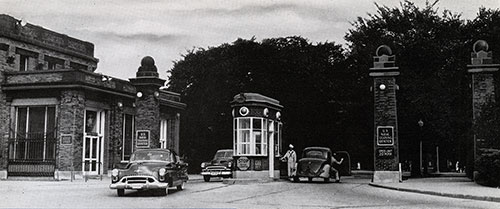
Main Entrance to the Great Lakes USNTC, 1951. | GGA Image ID # 219c92739d
Introduction
The article "Great Lakes Naval Training Center History" provides a comprehensive overview of the history of the U.S. Naval Training Center (NTC) Great Lakes, located in Illinois. Established in 1911, it has been a key site for training Navy recruits through major conflicts such as World War I, World War II, and beyond.
Early History
THE NAVAL TRAINING CENTER, Great Lakes, Illinois, began in 1904 when a board appointed by President Theodore Roosevelt selected two adjoining farms north of Lake Bluff, Illinois, as a site for a naval training station.
The Merchants’ Club of Chicago purchased the farms and presented them to the government as a gift from the people of Chicago. Six years of construction followed, and the Station was commissioned on July 1, 1911. Four months later, President William Howard Taft dedicated it as a station. At that time, it covered 172 acres and had a capacity of 1,500 men.
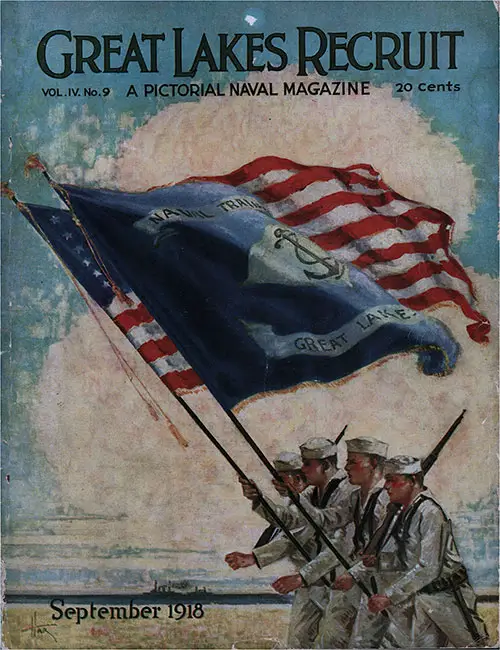
World War I Era Magazine "Great Lakes Recruit," from September 1918. | GGA Image ID # 219cd6b4af
The Great War - World War I
The Station’s size remained constant until the beginning of the First World War when a wartime expansion program occurred. By Armistice Day, 1918, the Station had expanded to 1,200 acres, with 45,000 men undergoing training. During World War I, a quarter of a million men were trained at the Great Lakes.
Interwar Period
During the period between wars, the station’s activity significantly decreased. It was completely closed down as a training activity from June 30, 1933, to July 29, 1935. When President Roosevelt proclaimed a national emergency on September 9, 1939, the total population of Great Lakes was less than 1,000.
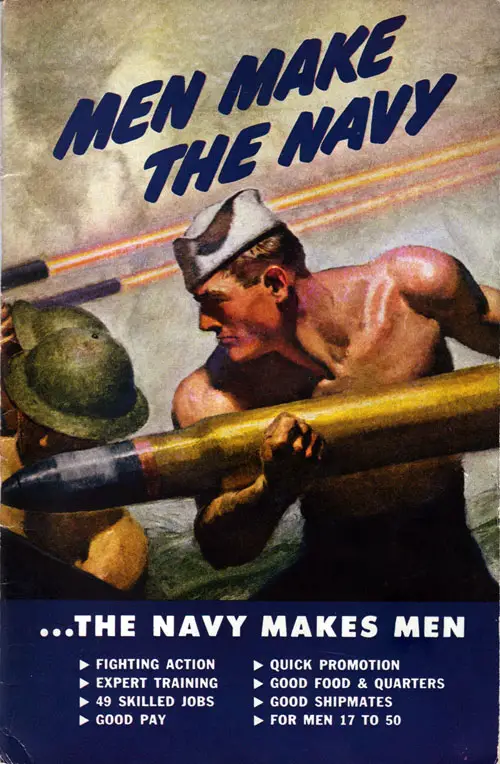
Front Cover of a World War II Era Brochure "Men Make the Navy... The Navy Makes Men," October 1942. | GGA Image ID # 219cf8431b
Expansion Program and World War II
July 26, 1940, marked the beginning of a construction program that would become the most extensive in Station history. Great Lakes’ capacity was increased to 14,000 by the day Japan struck Pearl Harbor.
With America’s entry into World War II, a tremendous increase in construction was authorized. More than 10,000 civilians were employed in the program, expanding the Station’s capacity to 82,000 men by September 1942. This expansion increased the Station’s area by more than a thousand acres.
At its wartime peak, the Great Lakes Naval Training Center had a crowded capacity of 100,000 men. Over a million Bluejackets, almost a third of the men in the wartime fleet, were trained at the Great Lakes NTC during the war.
On March 28, 1944, the Secretary of the Navy established the Training Station as a group command, redesigning it the U. S. Naval Training Center, Great Lakes, Illinois. The Center has four subordinate commands: the Marine Barracks and the Administrative, Service School, and Recruit Training commands.
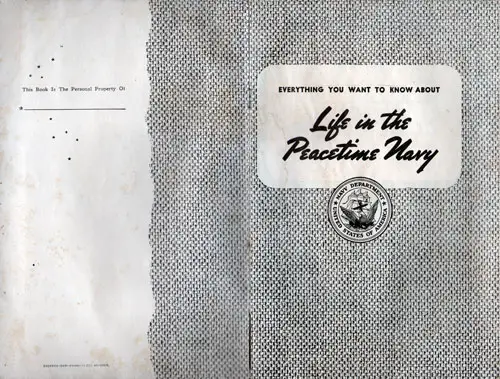
Front Cover of a Post World War II Brochure with "Life In The Peacetime Navy," from December 1945. | GGA Image ID # 219d28dd9e
Peacetime at Great Lakes
In peacetime, Great Lakes remains the world’s largest naval training center and one of our Navy’s most important establishments.
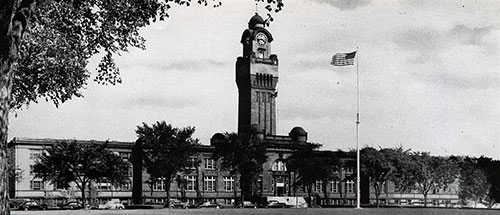
Building 1 HQ Ninth Naval District at Great Lakes NTC. 1951. | GGA Image ID # 219d5ac5d1
Headquarters
Building 1 of the Center is the headquarters of the Commandant, Ninth Naval District, who has general supervision over Naval activities within the district’s 13 states. One of the most essential functions of the Commandant is the administration of the district’s civilian Naval Reserve.
Two recent additions to the Center are the Naval Supply Depot, which has become one of the Navy’s large centers of supply distribution, and the Navy Medical Research Unit in Camp Green Bay, which conducts research in respiratory diseases and rheumatic fever.
A Naval Hospital, also located at Great Lakes, has complete facilities for maintaining the Navy’s high standards of physical efficiency. Here, treatment is given to patients of all the armed forces. Servicemen’s dependents are also treated in the hospital’s Dependents’ Care Department.
Hospital Training
Another activity of the Naval Hospital is the Hospital Corps School, where future corpsmen learn the skills needed during an intensive 16-week course.
The Marine Barracks is charged with general disciplinary and security controls. This command also carries out a Marine training program. About 700 Marines are usually stationed at the Center, although their number varies with the training schedule.
The Administrative Command, which occupies most of the original training station, is the nerve center of the Great Lakes. It handles the physical maintenance and overall administration of the Center.
The Service School Command is made up of six Navy trade schools, where Bluejackets are trained for some of the Navy's highly technical jobs. The schools' courses range from 12 weeks at the Journalist School to 42 weeks at the Electronics Technicians School.
Other units in this command are the Electrician's Mates, Interior Communications, Enginemen, and Machinist's Mates schools. These schools admit only specially selected men and admit many students immediately after completing their recruit training. They are equipped to provide practical experience and classroom instruction.
Other Schools
Two other schools at Great Lakes train Dental Technicians and Hospital Corpsmen.
The largest of the four commands at Great Lakes is the Recruit Training Command. More than half the men entering the Navy receive their first training here. Great Lakes is also the home of the Navy’s only Wave Recruit Training School, under the direction of the Recruit Training Command, but located in a different part of the Center.
Men going through recruit training are physically and mentally prepared to take their place in the Navy. They receive instruction on almost every phase of Navy life, from the proper method of rolling a uniform to techniques used to fight fires.
Recruit Training
During his training, the recruit receives both a basic indoctrination in the many skills he will need as a Bluejacket and a broad picture of the entire Navy, its history, traditions, and customs.
Physical training, inoculation against diseases, and training in first aid, physical hygiene, and related subjects form another significant part of the recruit training program. This program has resulted in an improvement in the physical condition of most recruits; coupled with wholesome food and the active and healthful environment of the training camps,
A sharp break between civilian and Navy life, recruit training is the basic element in any man’s time in the Naval service. It is the keel of a career in your Navy.
Photographs of Recruit Life at Great Lakes
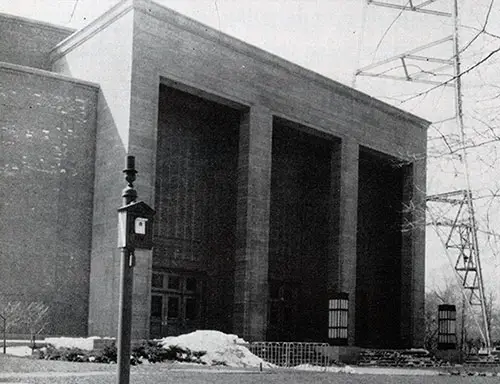
Ross Auditorium at Great Lakes NTC, 1951. | GGA Image ID # 219d6012df
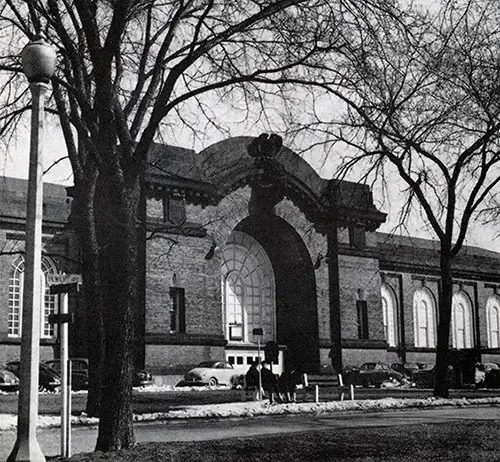
Building 4 Houses Huge Drill Hall at Great Lakes NTC, 1951. | GGA Image ID # 219db554a9
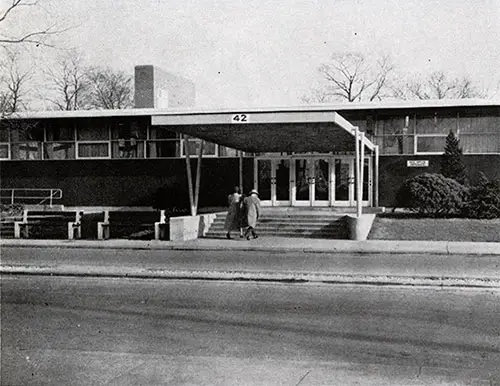
Building 45 - Where Recruits Meet Visitors at Great Lake NTC, 1951. | GGA Image ID # 219dc62f80
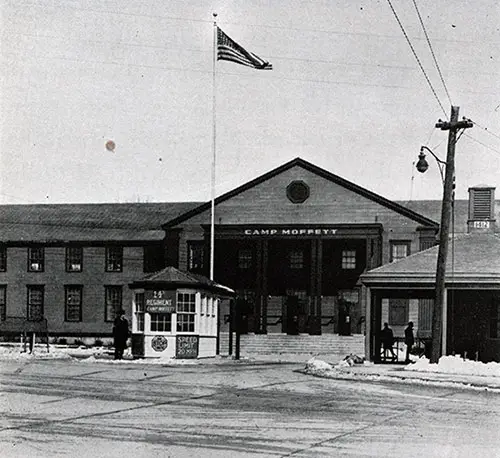
Entrance to Camp Moffett, 1951. | GGA Image ID # 219e2a3337
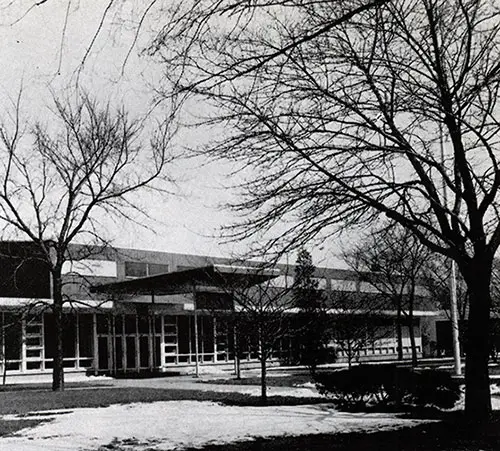
Great Lakes NTC Navy Exchange - Department Store, 1951. | GGA Image ID # 219e4762e0
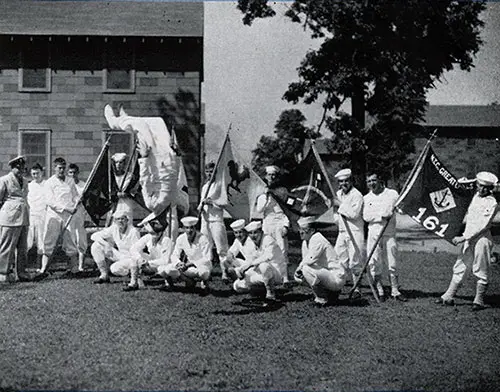
Great Lakes Company 161 Waiting for the Word to Fall In, 1951. | GGA Image ID # 219e7bd1c4
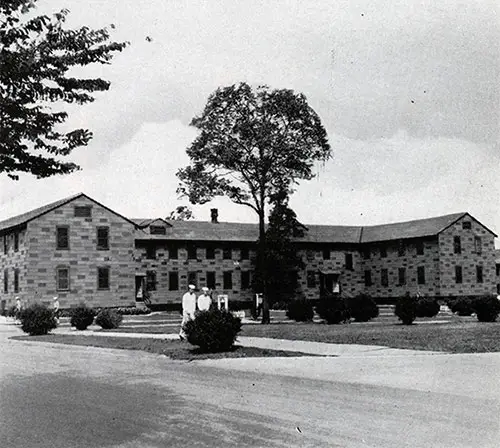
Typical Recruit Barracks at Great Lakes NTC, 1951. | GGA Image ID # 219e8e3698
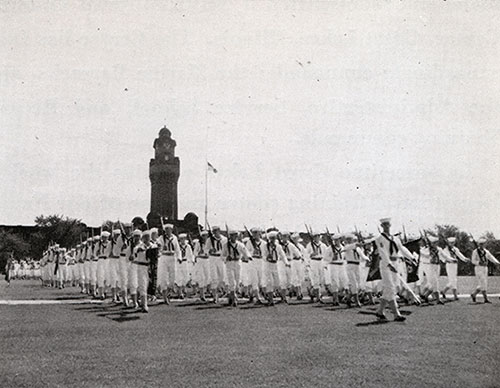
Passing In Review on Ross Field on Graduation Day at Great Lakes, 1951. | GGA Image ID # 219eade98e
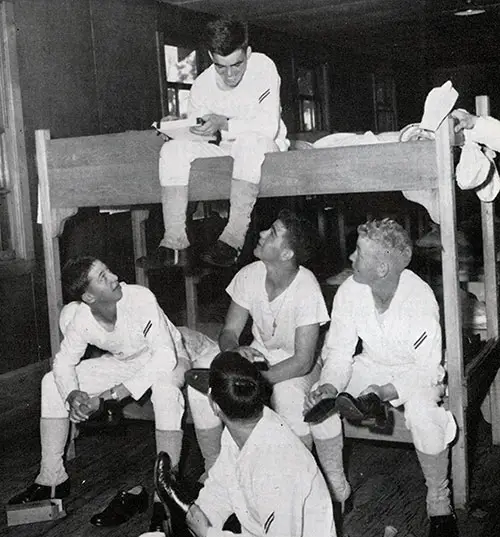
Life In The Barracks at Great Lakes, 1951. | GGA Image ID # 219f157e24
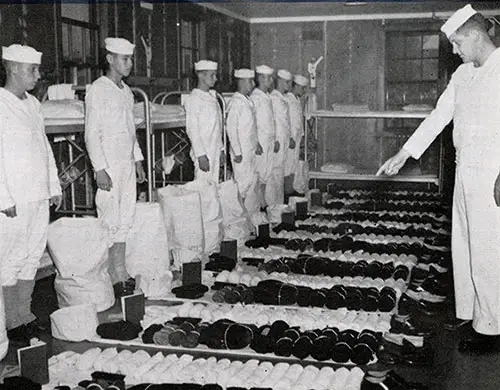
Seabag Inspection By Company Commander at Great Lakes, 1951. | GGA Image ID # 219f3dff37
Key Points
- Establishment and Early Years: Founded in 1911, expanded significantly during WWI.
- World War II Expansion: Massive growth in infrastructure and capacity to train up to 100,000 men.
- Peacetime Role: Continued as the largest naval training center.
- Educational and Training Programs: Includes Recruit Training Command, Service School Command, and specialized schools for various technical trades.
Summary
The Great Lakes Naval Training Center has played a crucial role in preparing Navy personnel for over a century. From its initial development in the early 20th century to its significant expansions during the World Wars, the center has been a cornerstone of naval training, continually adapting to the evolving needs of the U.S. Navy.
Conclusion
The history of Great Lakes NTC reflects its strategic importance to the U.S. Navy. As the Navy's largest training facility, it has contributed immensely to shaping the Navy's workforce, adapting its facilities and training programs to meet the needs of different eras.
